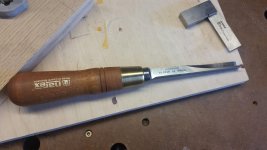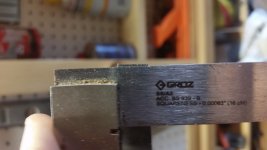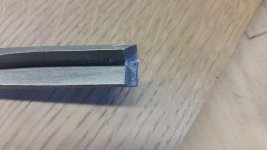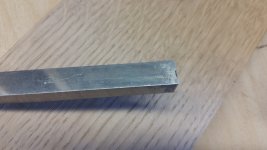ear3
Member
- Joined
- Jul 24, 2014
- Messages
- 4,342
I'm sketching out a project that might involve making through M&T joinery with wooden pegs. I've done some basic M&T with regular chisels, but never a through mortise (at least not one on a piece of furniture), and I'm wondering if it's worth it to get a corner chisel for an application life this, where I will want absolutely clean and square corners on the backside of the mortise, since it won't be hidden?
Also, in terms of sizes, is the 1/4" basically good for most applications?
Also, in terms of sizes, is the 1/4" basically good for most applications?




